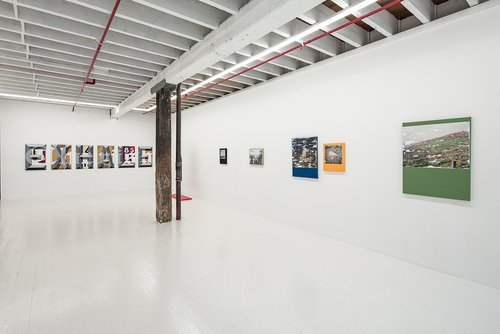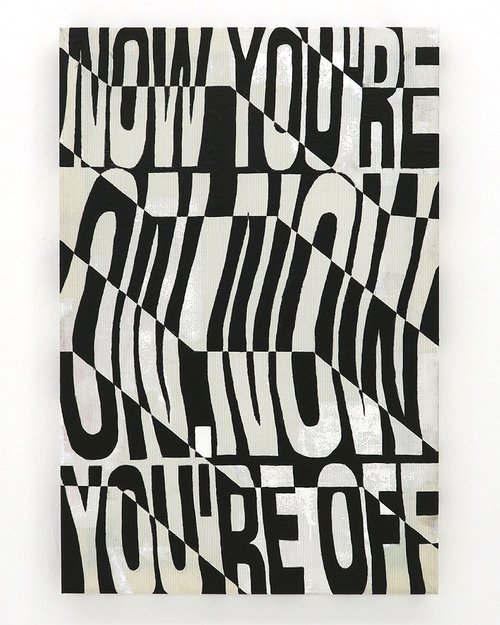Aedan Lee, Edward Woodley & Jarryd Lynagh
The LAW OF THE INSTRUMENT is a maxim which refers to the predisposition to solve a given problem in a specific and familiar manner despite the existence of a multitude of other, possibly more appropriate, methods of problem solving. Most commonly expressed through variations of the phrase, “When all you have is a hammer, everything looks like a nail”, the cognitive bias in this circumstance refers to the act and projections of art-making as a coping mechanism and synthesiser of perception. Aedan Lee, Jarryd Lynagh and Edward Woodley represent a lineage of art-makers whose working relationship has encompassed many forms of creative expression. Each oeuvre presented in the LAW OF THE INSTRUMENT centres itself upon one of three existential planes, the internal, the external and the transcendental.
Aedan Lee’s practice bridges painting, drawing and sculpture, using elements of abstraction in a refined colour palette. Working predominantly with repurposed industrial supplies such as meshes, tread plate and perforated steel, Lee renders geometric patterned surfaces onto his materials to create hybrid experimental forms which are greatly informed by the utilitarian aesthetics of public space. Seeking truth in the apparent bedlam of modernity, Lee’s works fracture, dissect and restructure the man-made environment to create a new observational lens. Lee’s current body of work, titled REWIRE explores the dynamics of change and the way we interact with the world. The series of contemplative text pieces have been removed from their original context, manually manipulated using a scanner and then rendered upon discarded anti-gawk mesh; an opaque substrate utilised for privacy that has proliferated our environment in parallel to unprecedented advancements in communication & technology.
Edward Woodley uses signage, the architecture of typography and appropriated functional objects for the basis of his work. Repurposed industrial materials and signage become the substrate for the pieces featured in LAW OF THE INSTRUMENT. The universal colours, patterns and symbols are reflective of navigating public spaces and the iconography of control and public order by the powers that be. The scoreboard digits amalgamated into the base layer allude to overarching powers keeping score, the war of attrition for agency under the blanket of the dystopic and obscured message above.
Jarryd Lynagh’s new oeuvre, A Way To Remember was photographed onsite in Cill Rialaig, Ireland, over the course of a one-month artist residency with the Cill Rialiag Arts Centre. Presented are photographs then printed, transferred onto canvas via a gel medium, stretched and then painted. Fidelity is lost in this transfer of information resulting in fatigued reflections of their progenitor. The subject matter of the work revolves around Lynagh’s observations of the visceral effigies of the past that exist within the landscape of County Kerry. The long shadow of history is cast upon the site, intersecting the experience of modernity. Moving forward from Lynagh’s past work of expanded documentary-style photography, presented in a straight photography medium, A Way To Remember seeks to synthesise permanence and transience through the visual language of the photographs and the mediums used to present them. Produced at a time in which the coming and going of significant persons, in all manners, was at the forefront of Lynagh’s perceptions, projections of these contemplations onto the works were unavoidable. A Way To Remember is imbued with both what was found on the residency and perhaps what was sought
Words: Jarryd Lynagh






























